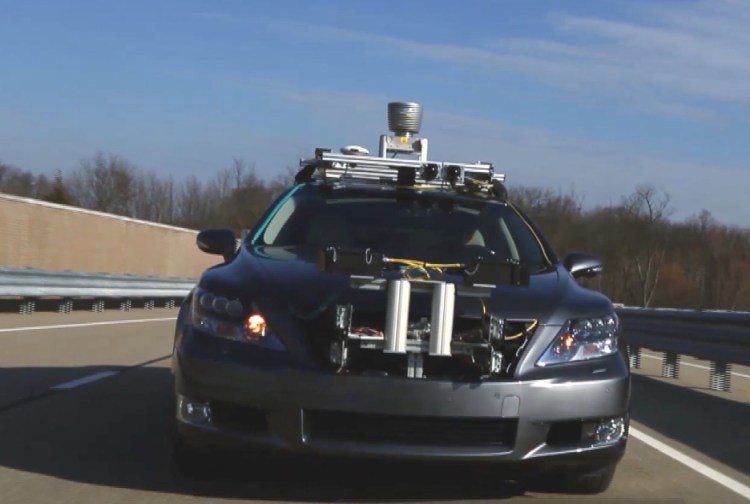Self-driving cars won’t always need to have those propeller beanies on top to sense the environment around them. NXP Semiconductors has unveiled a radar sensor chip today that is the size of a postage stamp.
This kind of innovation, which is being announced at the 2016 International CES, is what will usher in the age of safer driving alert systems and driverless cars. Market researcher IHS Research estimates that the market for radar sensors will grow to 50 million devices by 2021.
The single-chip radar sensor system is targeted at Advanced Driver Assistance Systems (ADAS), or cars that either drive themselves or help drivers stay safer and more alert. The radar transceiver chip operates at 77 gigahertz and fits in a 7.5 millimeter x 7.5 millimeter space.
Netherlands-based NXP, one of the world’s largest chipmakers, said the chip has high-resolution performance that provides more precise data about the surrounding driving environment.
Prototypes of the radio-frequency chip are in the hands of NXP’s lead customers, and they’re being tested by the Google engineers working on the company’s self-driving car project. The NXP chip enables a new generation of radar-sensor assemblies that can be integrated “invisibly” practically anywhere in the car. That’s a big help for car designers, as the number of sensors needed has been steadily increasing as we head toward fully automated cars.
“Building the world’s smallest, fully integrated and affordable 77GHz chip will pave the way for self-driving cars and drive increased ADAS adoption in the volume market,” said Torsten Lehmann, senior vice president of infotainment and driver assistance at NXP, in a statement. “In self-driving cars, a ‘cocoon’ of radar sensors is required to provide a robust high-resolution, 360-degree view of the environment.”
Manufacturers are eager to get rid of existing ultrasonic-based park-distance control systems with “invisible” radar sensors and are looking to avoid unattractive holes in the bumper while improving performance and features, Lehman said.
The chip’s power consumption is 40 percent lower than that of conventional radar chips. Applications include emergency braking, adaptive cruise control, pedestrian detection, blind-spot monitoring, cross-traffic alerts, and automated parking.
VentureBeat's mission is to be a digital town square for technical decision-makers to gain knowledge about transformative enterprise technology and transact. Learn More

